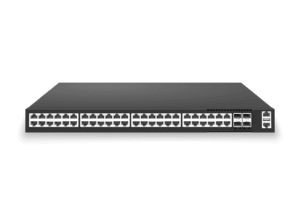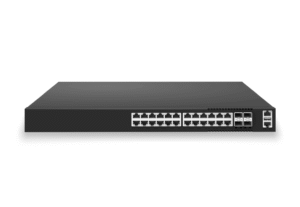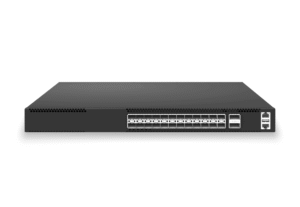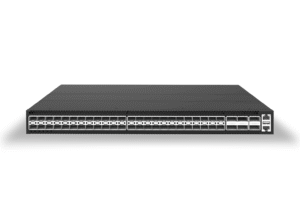Table of Contents
As modern enterprise campus networks and carrier-grade infrastructures continue to evolve, Multiprotocol Label Switching (MPLS) has emerged as a foundational technology—thanks to its high-efficiency packet forwarding, advanced traffic engineering capabilities, and robust support for multi-tenant environments.
The exciting news? Asterfusion’s full portfolio of SONiC-based open campus switches now fully supports MPLS, delivering greater flexibility, scalability, and control for your next-gen network deployments.
See below for supported models.
| Model | Ports and OS | MPLS Support |
| CX102S-8MT-M-S | 8 x 2.5G RJ45, 2 x 10G SFP+,Enterprise SONiC | ✔ |
| CX204Y-24GT-M-S | 24 x 1G RJ45, 4 x 25G SFP28/10G SFP+,Enterprise SONiC | ✔ |
| CX204Y-48GT-M-S | 48 x 1G RJ45, 4 x 25G SFP28/10G SFP+,Enterprise SONiC | ✔ |
| CX206Y-48GT-M-H | 48 x 1G RJ45, 6 x 25G SFP28/10G SFP+,Enterprise SONiC | ✔ |
| CX206P-24S-M-H | 24 x 10G SFP+, 6 x 100G QSFP28/40G QSFP,Enterprise SONiC | ✔ |
| CX206P-48S-M-H | 24 x 10G SFP+, 6 x 100G QSFP28/40G QSFP,Enterprise SONiC | ✔ |
| CX202P-16S-M-H | 16 x 10G SFP+, 2x100Gb QSFP28/40Gb QSFP+,Enterprise SONiC | ✔ |
| CX202P-24Y-M-H | 24 x 25G SFP28, 2 x 100G QSFP28/40Gb QSFP+,Enterprise SONiC | ✔ |
What Is MPLS?

MPLS (Multiprotocol Label Switching) is a high-performance forwarding technology widely adopted by ISPs and large-scale enterprise networks. Sitting between Layer 2 (Data Link) and Layer 3 (Network) in the OSI model, it’s often called a “Layer 2.5” protocol.
Rather than routing packets solely based on their IP addresses, MPLS adds a short, fixed-length label to each packet. This label streamlines the forwarding process, allowing routers to make faster and more deterministic routing decisions—improving overall performance and enabling powerful traffic engineering capabilities.
How Does MPLS Work?

MPLS replaces traditional destination-based routing with a more efficient label-based forwarding mechanism:
Label Assignment
When a packet enters the MPLS network, the ingress Label Edge Router (LER) assigns a label based on its destination and forwarding rules (known as a Forwarding Equivalence Class, or FEC).
Label Switching
Inside the MPLS core, Label Switch Routers (LSRs) forward packets purely based on their label, using a Label Forwarding Information Base (LFIB) to swap the incoming label with a new one at each hop. No deep packet inspection required—resulting in faster routing.
Label Stacking
MPLS supports multiple labels per packet—a concept known as label stacking. This is especially useful for hierarchical routing, VPN tunneling, and complex traffic engineering scenarios.
Label Removal
When the packet reaches the egress LER, the label is removed and the packet is forwarded to its destination using standard IP routing.
Label distribution across the network is coordinated using protocols like LDP (Label Distribution Protocol) and RSVP (Resource Reservation Protocol) to ensure consistency.
MPLS Label Structure
An MPLS label is a compact, 32-bit header comprising four key fields:

Label (20 bits) – Identifies the path (LSP) through the MPLS network.
EXP (3 bits) – Used for QoS (Quality of Service) marking or traffic prioritization.
S (1 bit) – Bottom of Stack flag; indicates if this is the last label in the stack.
TTL (8 bits) – Time To Live; prevents routing loops by limiting the packet’s lifespan.
MPLS Standard Protocols
MPLS (Multiprotocol Label Switching) is governed by a comprehensive suite of standards developed by the Internet Engineering Task Force (IETF). These core RFCs define the architecture, mechanisms, and applications of MPLS:
- RFC 3031 – MPLS Architecture
- RFC 3032 – Label Stack Encoding
- RFC 5036 – LDP (Label Distribution Protocol)
- RFC 3209 – RSVP-TE for Traffic Engineering
- RFC 4364 – BGP/MPLS IP VPNs (Layer 3 VPN)
- RFC 7432 – EVPN (Ethernet VPN)
Together, they form the foundation for label-based switching, advanced traffic engineering, and carrier-grade VPN deployments.
What Problems Does MPLS Solve?
Originally developed in the late 1990s, MPLS was designed to overcome several inherent limitations in traditional IP routing. Its advantages include:
- Faster Forwarding
Traditional IP routing relies on extensive header lookups. MPLS simplifies this by using labels for high-speed, hardware-accelerated packet switching. - Traffic Engineering
Standard IP protocols often default to shortest-path routing, which can result in congestion. MPLS enables explicit path selection, improving load balancing and resource utilization. - Scalability
By decoupling forwarding from complex routing logic, MPLS supports large-scale, distributed networks with reduced overhead. - Quality of Service (QoS)
MPLS supports differentiated services by assigning labels with specific QoS policies—ideal for latency-sensitive traffic like voice and video. - Protocol Agnosticism
MPLS supports multiple Layer 2 protocols (e.g., IP, ATM, Frame Relay), making it highly adaptable for mixed technology environments. - VPN Enablement
MPLS-based Layer 3 and Layer 2 VPNs provide secure, scalable, and isolated multi-tenant services—essential for enterprise and carrier networks.
Typical MPLS Application Scenarios
- ISP networks : MPLS is a backbone for ISP networks, enabling efficient traffic management and QoS for diverse services (e.g., voice, video, data).
- MPLS VPN (L3VPN/L2VPN): Provides logically isolated private network services for enterprise customers, a mainstream VPN implementation for operators. L3VPN (RFC 4364) offers secure, scalable connectivity for enterprise branch offices.
- Traffic Engineering: MPLS-TE optimizes network performance by directing traffic to specific paths to avoid congestion.
- Metro Ethernet: MPLS supports Virtual Private LAN Service (VPLS) to connect geographically dispersed LANs.
- 5G and IoT: MPLS ensures low-latency, high-reliability transmission for 5G backhaul and IoT applications.
- Data Center Interconnect (DCI): MPLS serves as a backbone to connect multiple data centers, enhancing performance and reliability for cross-domain communication.
Asterfusion’s SONiC-Powered Open Campus Switch: Unleashing MPLS Innovation
MPLS operates between Layer 2 and Layer 3, blending the predictability of circuit switching with the agility of IP routing. It enhances packet forwarding speed, supports granular traffic control, and enables multi-protocol environments—making it indispensable for large-scale networks in telecom, enterprise WANs, and cloud data centers.
The best part?
Asterfusion’s SONiC-based open campus switches now fully support MPLS, empowering your network with the performance and flexibility needed for the next generation of connectivity.
Email to bd@cloudswit.ch to get detail MPLS features.
-
 8×2.5G RJ45 L2/3 Access Switch, 2x10Gb SFP+ Uplinks, Enterprise SONiC Ready
8×2.5G RJ45 L2/3 Access Switch, 2x10Gb SFP+ Uplinks, Enterprise SONiC Ready -
 48x1G RJ45 L2/3 Access Switch, 4x25Gb/10Gb SFP28 Uplinks, Enterprise SONiC Ready
48x1G RJ45 L2/3 Access Switch, 4x25Gb/10Gb SFP28 Uplinks, Enterprise SONiC Ready -
 24x1G RJ45 L2/3 Access Switch, 4x25Gb/10Gb SFP28 Uplinks, Enterprise SONiC Ready
24x1G RJ45 L2/3 Access Switch, 4x25Gb/10Gb SFP28 Uplinks, Enterprise SONiC Ready -
 48x1G RJ45 L2/3 Access Switch, 6x25Gb/10Gb SFP28 Uplinks, Enterprise SONiC Ready
48x1G RJ45 L2/3 Access Switch, 6x25Gb/10Gb SFP28 Uplinks, Enterprise SONiC Ready
-
 24x25G SFP28, 2x100G QSFP28 Uplinks, L3 Core/Leaf Switch, Enterprise SONiC Ready
24x25G SFP28, 2x100G QSFP28 Uplinks, L3 Core/Leaf Switch, Enterprise SONiC Ready -
 24-Port 10Gb SFP+L3 Aggregation with 6-Port 100Gb QSFP28 Uplink Enterprise SONiC Ready
24-Port 10Gb SFP+L3 Aggregation with 6-Port 100Gb QSFP28 Uplink Enterprise SONiC Ready -
 16x10Gb SFP+, 2x100Gb/40Gb QSFP28 QSFP+ L3 Leaf&Core Switch, Enterprise SONiC Ready
16x10Gb SFP+, 2x100Gb/40Gb QSFP28 QSFP+ L3 Leaf&Core Switch, Enterprise SONiC Ready -
 48x10Gb SFP+, 6x100Gb QSFP28 L3 Leaf & Core Switch, Enterprise SONiC Ready
48x10Gb SFP+, 6x100Gb QSFP28 L3 Leaf & Core Switch, Enterprise SONiC Ready



